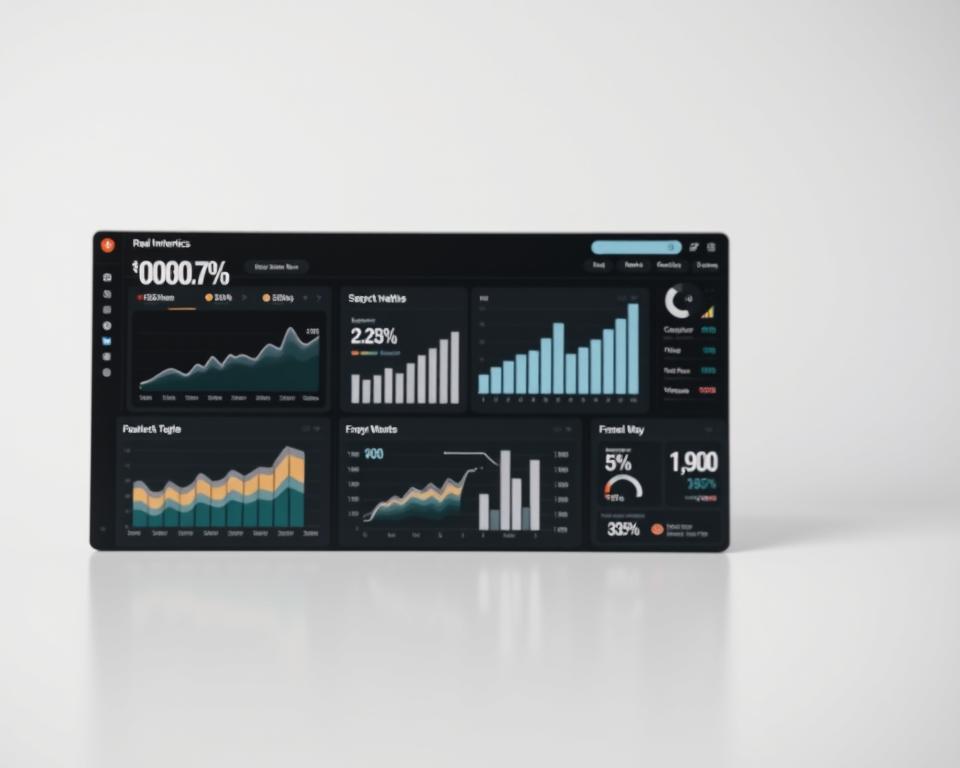Anúncios
Can a small set of practical steps turn creative activity into real business results?
This guide gives you a compact, evidence-based checklist you can act on today. It focuses on real progress, not theater—so your team spends time on work that proves impact.
We preview a three-pillar approach—people, portfolio, and process—and show how each pillar links to measurable outcomes.
The checklist centers on legitimacy, stakeholder support, and test-driven validation. You will see tools like the three horizons, a Business Design Test Loop, and staged funding tied to evidence strength.
Examples from Ping An and Bosch illustrate how leaders balance short-term wins with longer growth bets. The aim is practical guidance you can adapt to your people, projects, and strategy.
Anúncios
Note: This is strategic guidance, not a promise of guaranteed success. Consult qualified professionals for business or sustainability decisions.
Key Takeaways
- Follow a three-pillar approach—people, portfolio, process—to convert ideas into results.
- Build legitimacy and stakeholder support before scaling new efforts.
- Use test-driven loops and staged funding tied to evidence.
- Balance short-term improvements with longer growth bets.
- Adapt tools and governance to your organization and projects.
- Seek external advice for major strategic or sustainability choices.
Introduction: Why your innovation checklist matters now
An effective innovation checklist turns sporadic ideas into steady business results. Markets move fast. Cycles shorten. Disruption rewards systems, not one-off activities.
System over theater matters because the real work begins after ideation. Strategyzer warns against showy programs and urges testing and validation. Rita McGrath likewise stresses disciplined follow-through: test assumptions, gather evidence, and scale what proves real value.
Anúncios
The practical frame here is threefold: people, portfolio, process. This approach helps you focus resources, cut risk, and align projects with strategy. SU data shows 70% of organizations list this as a priority, yet only 34% document a plan.
The scope of this guide covers current data, market-pull rules (the 7–10 insight), and company examples you can adapt from Ping An and Bosch. It stresses documented plans, clear metrics, and staged funding that grows with evidence.
Use these steps to find opportunities and guide choices. This is strategic guidance, not a guarantee. Consult qualified professionals for high-stakes business or technical decisions.
- Quick facts: prioritize legitimacy, mix your portfolio, and test to evidence.
- Favor market pull first; then apply technology where fit exists.
- Document plans, measure progress, and fund incrementally.
Your rapid-start innovation checklist
Begin with a one-line definition that maps what counts as new product, process, or business activity to the Three Horizons: Horizon 1 = core, Horizon 2 = scaling new offers, Horizon 3 = long-term bets.
Use the strategy “smell test” to make explicit choices: if the opposite could be true, tighten the strategy so teams know which ideas belong where.
- Build a 90-day plan: list 3–5 priorities, name accountable owners, set decision dates, and state the early evidence you expect.
- Form small cross-functional teams with a clear problem, target customer, and success criteria.
- Standardize tools across projects (value proposition canvas, business model canvas, a test backlog) so you can compare outcomes.
- Assign a staged budget per project and release more resources only as evidence grows.
- Adopt a shared project checklist: top assumptions, test plan, timeline, and how you grade do‑evidence versus say‑evidence.
“Make transparency a norm: publish dashboards so leaders see learning, risks, and resource needs.”
For a practical template, consult the Innovator’s checklist and adapt it to your governance rhythm—biweekly 30-minute reviews to kill, pivot, or commit.
People and legitimacy: build champions before you scale ideas
Before you scale, focus on the human side: credibility, champions, and clear wins. Earning permission to be different starts with small, visible value that others can see and share.
Earn idiosyncrasy credits
Show value early. Deliver quick, concrete wins so you earn trust and a bit of leeway to try new approaches. Edwin Hollander’s idea of idiosyncrasy credits works: deliver first, then ask for latitude.
Map your stakeholders
Identify resistors, compliers, endorsers, and champions. Tailor your asks: some need data, some need a demo, and some need a clear next step.
Activate 5–15% champions
Target a small fraction of the organization as active advocates. Equip them with crisp narratives, short demos, and one-page updates so leaders can act fast.
“Legitimacy grows from repeated delivery, customer proof, and visible collaboration with teams.”
- Brief leaders on risks and specific asks, not vague alignment.
- Credit the team publicly and keep efforts ethical and inclusive.
- Use short updates that state evidence and the help you need next.
Portfolio strategy: align bets across explore and exploit
Your portfolio should translate ambition into concrete arenas and projects. Name the areas you will play in and the kinds of products that fit—and which do not. This makes choices visible and keeps teams focused on outcomes.
Use the strategy “smell test” on every plan: if the opposite sounds plausible, tighten the wording. Real trade-offs force clearer decisions and reduce wasted time and resources.
Apply the Three Horizons to pace development and risk. Link Horizon 1 to short-term business wins, Horizon 2 to adjacencies, and Horizon 3 to long-term growth. Tie each horizon to time and staged funding so projects earn more as evidence grows.
- Translate ambition into named arenas and a clear model for projects.
- Avoid fixed ratios; set your mix by disruption risk and current resources.
- Govern explore and exploit differently: distinct metrics, decision rights, and P&Ls.
“Ping An named five arenas and focused on five technologies, reinvesting roughly 10% of profits into new ventures.”
Align small cross-functional teams for explore work and strong owners for exploit. Track progress with a visible funnel and reallocate funds to highest-evidence opportunities each quarter.
Process discipline: move from ideas to evidence
Turn early concepts into verified learnings by following a disciplined test loop. Keep the focus on short cycles that reduce risk and produce real customer behavior, not just opinions.
Design like you’re right, test like you’re wrong. Use the Business Design Test Loop: ideate, prototype, assess, and test. Map your model and value proposition, then build low-fidelity prototypes to surface assumptions quickly.
Run a Business Design Test Loop for rapid learning
List top assumptions per project and rank them by risk. Design experiments that yield do‑evidence from real customers so you can compare progress across projects.
Shift from a tunnel to a funnel: kill, pivot, or double down
Replace endless development with clear gates. Grade the strength of evidence, then kill weak efforts early, pivot when data suggests, and double down when signals are strong.
Example: Bosch’s staged validation
Bosch ran staged validation: 214 teams entered and 19 validated businesses emerged. Early phases gave roughly €120,000 per team over three months to validate customer, value, and model.
“Stage-gate funding, small teams, and disciplined testing turn many ideas into a few scalable products.”
- Use consistent tools to map models and tests.
- Track simple metrics that show risk reduction, not activity counts.
- Manage resources in tranches tied to milestones and evidence.
- Report learning transparently so management can make timely calls.
Metrics and funding: track progress, not activity
اہمیت کی پیمائش کریں: shift attention from tasks to evidence that reduces risk. Use metrics to show real progress and to guide funding decisions rather than to reward output.
Score projects on desirability, feasibility, viability, adaptability, and fit to strategy. Review scores at every gate so leaders see clear progress and not just noise.

Favor do-evidence over say-evidence
Weight observed customer behavior higher than interviews. Do-evidence lowers risk and gives you stronger outcomes to show management.
Incremental funding tied to evidence
Release resources in tranches as teams de-risk their product and business model. Pause or redirect funds when evidence weakens and scale when signals are strong.
Visualize the pipeline
Build a simple dashboard from discovery to scaling so leaders can spot gaps and bottlenecks quickly.
- Define a scoring model and review it at each gate.
- Tie funding tiers to evidence strength and time-to-decision.
- Publish a monthly snapshot showing outcomes, outstanding risks, and planned tests.
“Decision-ready data beats activity reports.”
ٹپ: include a light financial view and consult finance partners when you set funding cadence and gates.
Technology and market sensing: connect pull and push
Let customer demand lead; apply technology only where it makes measurable differences.
Market pull first: segment customers, map jobs-to-be-done, and quantify pains before you allocate development resources. Validate needs with small discovery sprints so your teams prove value quickly.
Tech push second: once needs are clear, match technology enablers—AI, IoT, or robotics—to the model where they reduce cost or improve outcomes, not for novelty.
Set up a trend radar and scouting
Build a living radar that tracks technologies, regulations, and startups. Refresh quarterly and score opportunities by fit, timing, and risk.
- Monitor startups, partners, and M&A targets in developer ecosystems.
- Standardize insight logs so organizations can compare signals across areas.
- Decide when to buy, build, or partner to save time and resources.
Protect privacy and comply with regulations: responsible use of customer data builds trust and long-term growth.
Operating model: governance, handovers, and organizational design
Design your operating model so early ventures get protection, funding, and a clear path to handover. This keeps teams focused on tests and customer evidence, not internal politics.

Establish governance that shields new P&Ls
Set clear decision rights. Define a governance model that protects nascent business models from core KPIs. Give leaders authority to fund, staff, or stop projects quickly.
Plan handovers or build new vehicles
Plan handovers from day one. If a new product fits existing channels and metrics, set criteria and timing. If it does not, create a separate vehicle with its own P&L and reporting.
Teams, funding, and capability building
Use small cross-functional teams with explicit decision rights. Provide internal venture funding and a steering committee to speed management choices.
- Specify graduation checks: customer traction, unit economics, and operational fit.
- Run fairs, training, and staff rotation so skills spread across the organization.
- Keep artifacts light: operating principles, decision rights, and escalation paths.
“Track leading indicators, not just revenue, and be ready to create or sunset structures as the business matures.”
نتیجہ
Use this framework to link small tests to tangible impact and sustained growth. Keep people, portfolio, and process moving together so your teams score real results, not just activity.
Tailor the strategy and model to your context. Name the outcomes you want, publish short progress updates, and protect early work with clear decision rights.
Seek legitimacy with champions who show early wins. Use the funnel, measure outcomes that matter, and evolve your approach as evidence builds.
Disciplined choices and steady progress raise your chances of success and lasting impact. Document plans, track results, and consult finance, legal, or domain experts for major company decisions.



